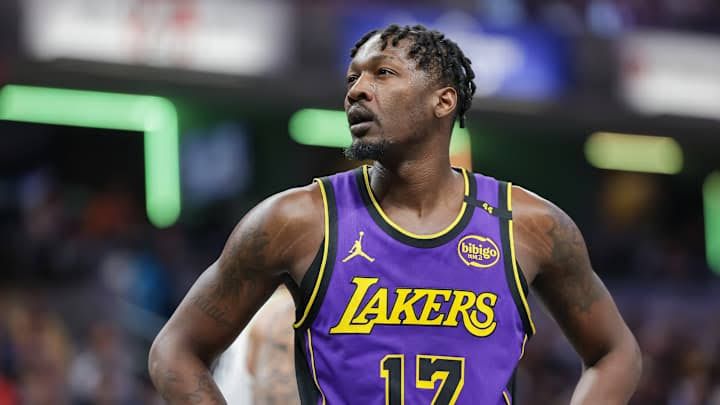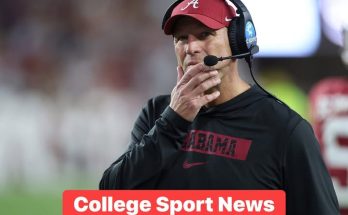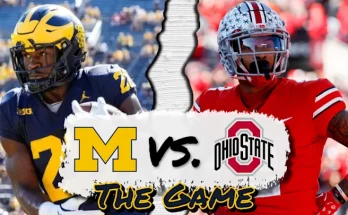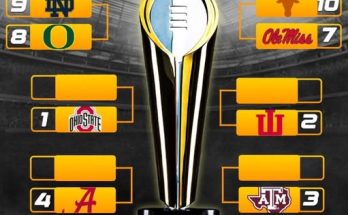The Los Angeles Lakers have long been one of the most ambitious and strategic franchises in the NBA, always looking to assemble rosters that can contend immediately while keeping an eye on the future. Their latest maneuver in the ever-competitive free agency market illustrates this dual focus perfectly. According to team sources, the Lakers offered a notable player a two-year contract, a sharp contrast to the four-year, $53 million deal the player ultimately accepted from the Houston Rockets. This decision by the Lakers was not just about immediate budget concerns or a conservative financial stance; rather, it was a calculated move aimed at preserving future cap flexibility. The Lakers’ front office clearly has its sights set on a bigger prize: maintaining the flexibility to pursue a true superstar who could join forces with the Dallas Mavericks’ Luka Dončić, one of the league’s brightest young talents.
The essence of this Lakers’ strategy reveals much about how NBA front offices operate in the modern era. Cap space is a precious commodity, especially for a team that aspires to build a championship contender through a combination of star power and supporting talent. By limiting the length of the contract they offered, the Lakers positioned themselves to have more financial leeway in the coming years. This approach is designed to avoid locking up too much money in mid-tier players when the possibility exists of landing an all-time great alongside a franchise cornerstone like Luka Dončić.
This tactic reflects the broader philosophy shaping the Lakers’ roster construction under their current leadership. With LeBron James entering the twilight years of his career, the team is aware that the window for championship contention is narrowing. They need to be nimble and proactive, making room for the kind of transformative signing that can extend their competitive window significantly. The offer of a shorter-term deal is a clear indication that the Lakers would rather gamble on future opportunities to acquire a superstar than commit heavily in the present on a contract that, while lucrative, could hinder their ability to pivot when the right star becomes available.
On the flip side, the Houston Rockets’ decision to offer a four-year, $53 million contract to the same player underscores a different organizational philosophy and set of priorities. The Rockets appear to be more focused on building a solid foundation around their core players through longer commitments to complementary talent. For Houston, locking down a valuable player for four years provides a degree of stability and continuity that is crucial for developing chemistry and consistency on the court. It’s a more conservative, yet still calculated, approach that prioritizes sustained growth over immediate cap flexibility.
From the player’s perspective, the decision to choose Houston’s offer over the Lakers’ can be seen through multiple lenses. Financially, the Rockets’ deal provides longer-term security, which is a significant factor for many athletes whose careers can be unpredictable and relatively short. It’s also likely that the player considered the opportunity for a larger role and consistent minutes, something that a rebuilding team like Houston can more readily offer compared to the star-laden Lakers roster. The stability of a longer contract and a defined role may have outweighed the allure of playing in Los Angeles and potentially waiting for a superstar to arrive.
For the Lakers, the hope is that by offering a shorter contract, they can avoid overcommitting resources in a crowded roster and keep the door open for more impactful acquisitions in the near future. This strategy is especially relevant when considering the shifting landscape of NBA free agency and trade opportunities. Superstars, whether emerging or established, rarely come without a hefty price tag in salary and assets. By maintaining cap flexibility, the Lakers are better positioned to make bold moves, whether that be signing a marquee free agent or facilitating a blockbuster trade.
The presence of Luka Dončić in this scenario adds an intriguing layer of complexity and urgency to the Lakers’ plans. Dončić, a transcendent talent who has quickly established himself as one of the NBA’s elite players, represents a generational opportunity for any team able to pair him with the right complementary star. The Lakers recognize that acquiring such a player could be a franchise-defining moment, possibly resetting the balance of power in the Western Conference and the league at large. Therefore, preserving the ability to offer a maximum contract to a superstar is paramount. Every dollar and roster spot matters when trying to build a championship team around a player of Dončić’s caliber.
Moreover, this approach is consistent with the Lakers’ recent history. The franchise has often pursued star talent aggressively, most famously with the acquisitions of LeBron James and Anthony Davis. These moves came at the cost of significant roster and financial flexibility, but the gamble paid off by returning the Lakers to championship contention. Learning from that experience, the current front office appears to be more cautious, aiming to strike a balance between competitiveness and flexibility. They want to avoid the risk of overpaying for role players at the expense of losing out on a once-in-a-generation superstar who could elevate the entire franchise.
The Lakers’ offer also speaks to the evolving economics of the NBA. The salary cap has risen steadily over the past decade, but luxury tax penalties and collective bargaining agreement rules continue to impose constraints on team spending. Franchise executives must navigate these complex rules while attempting to maximize their teams’ talent and chemistry. Offering shorter deals can be a savvy move to stay under the luxury tax threshold and avoid long-term salary commitments that limit maneuverability. The Lakers clearly understand that the cap landscape in future seasons will be shaped by the contracts they commit to now.
It’s worth noting that offering shorter contracts is not without risks. The player in question may use a strong performance in the first two years to demand a bigger payday, potentially from another team, leaving the Lakers empty-handed. Additionally, a shorter contract means the team has less time to develop chemistry with the player before they become a free agent again. However, the Lakers are evidently willing to accept these risks because the potential reward—landing a superstar to pair with Dončić—is so significant.
This scenario also sheds light on how team-building philosophies differ across the league. Some franchises prioritize stability and continuity, seeking to build through steady, longer-term deals for reliable players. Others, like the Lakers, are more willing to accept uncertainty if it means keeping the possibility open for transformative acquisitions. Both approaches have their merits, and each franchise’s decisions are often influenced by their current competitive window, market conditions, and broader strategic goals.
In the broader context of the NBA’s competitive landscape, the Lakers’ strategy may influence other teams as well. With so many franchises vying for the same pool of top-tier talent, maintaining cap flexibility is often a key component of successful roster construction. Teams that can clear salary space or avoid long-term commitments may have a distinct advantage when the next superstar becomes available. The Lakers’ willingness to offer a shorter contract to retain this flexibility is an example of this principle in action.
Furthermore, this approach fits into a larger narrative about the importance of superstar talent in today’s NBA. While role players and depth are crucial to success, history shows that championship teams are almost always built around one or two transcendent stars. The Lakers, having experienced this firsthand with LeBron and Davis, understand that acquiring a true superstar can change everything. By tailoring their contract offers and roster decisions around this goal, they are positioning themselves to be players in the race for the next big star.



